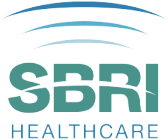 Back to main site
Back to main site
Quality of life impact of Brain in Hand
Results of an independent clinical study
Why is this independent research important?

Reach
There are more than 700,000 autistic people in the UK. The number of people seeking a clinical autism assessment is increasing.

Anxiety
Every autistic person has their own unique experiences and needs. Many experience day-to-day chronic anxiety which can impact significantly on their mental health.

Inequalities
Autistic people experience some of the greatest inequalities in the UK. They have poor quality of life outcomes.

Support
The NHS is looking at different ways to improve quality of life for autistic people. Digital tools can improve support but there has been a lack of evidence for effectiveness.
What are the statistics on health inequalities?
Support
If any themes in this study affect you please click here for support.
What did the researchers want to find out in this study?
- To identify the impact of Brain in Hand on quality of life
- To examine the impact of Brain in Hand on mental health
- To discover how digital tools and 24/7 support impact on people’s ability to manage difficult events and internal experiences
- To discover if Brain in Hand could improve a person’s self-awareness
How were autistic people involved in the study design?
It is important to build partnerships that give people a say in the research we do. Co-production was at the heart of the study design.

Research design was joint-led by an autistic person.

The research design was created together with autistic people.

Communication with study participants was continually adapted to ensure safety, trust and understanding.

The study participants led the pace and style of communication and were offered choices for communication.
Where did the study take place?

The study found that Brain In Hand
The one-to-one interviews mirrored these findings
Brain in Hand significantly impacted the following areas (p<0.001)

Individual HoNOS-LD Component Scores
Brain in Hand meets the minimum needed evidence of research effectiveness for Tier C of NICE Standard Evidence Framework for Health Digital Technologies.
What recommendations were made for improving Brain in Hand?
Participants in the study recommended a number of improvements to the tool. Below is progress on these improvements.
- Develop a bank of strategies in order to learn from other autistic people 100% Complete
- Improve the onboarding process, tailoring the sessions and reducing duration 50% Complete
- Improve the ability to update, add and sync content between app and web app 50% Complete
- Provide more opportunity to track emotions within the mood monitor 25% Complete
- Improve planning tool editing functionality and longer time views Being Scoped
- Improve the calendar feature to sync with other apps and digital tools Being Scoped
- Develop opportunities for peer support Not Currently Planned

















